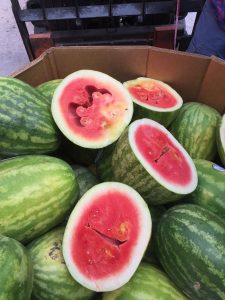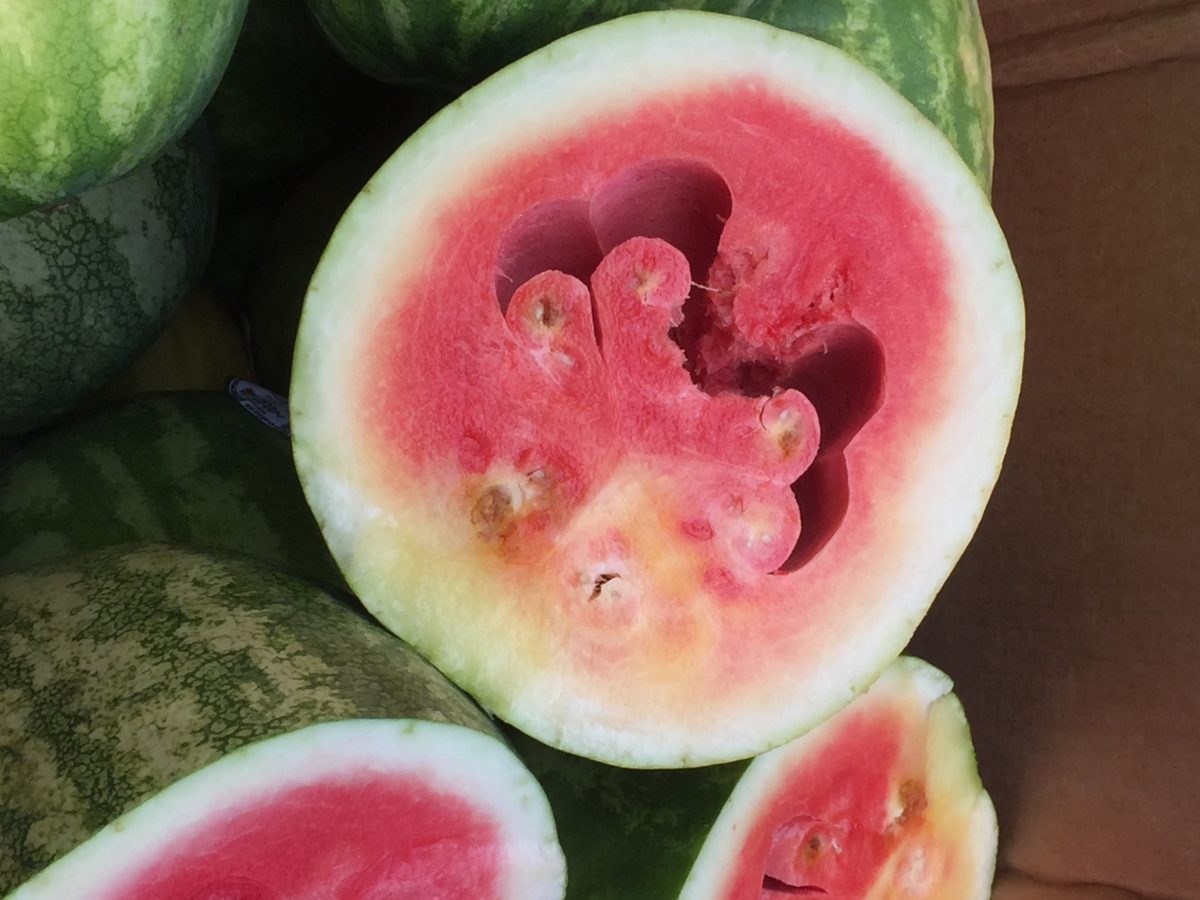By Breanna Kendrick
A lot of watermelon growers have had to deal with hollow heart this season. It’s not known for certain what causes hollow heart, but research is pointing toward pollination deficiency.
Hollow heart is a separation of the cells in the flesh of the fruit, which causes a fissure to form. A fissure can form from stem to blossom (length ways) or it can form across the width of the fruit. The cells won’t grow, so a gap will form. As the melon expands, most of the time, that gap gets bigger. This is a problem because a melon with hollow heart cannot be sold in the market.
Josh Freeman, associate professor of horticultural sciences at the University of Florida Institute of Food and Agricultural Sciences North Florida Research and Education Center in Quincy, has studied hollow heart.
“Some people think it (hollow heart) is caused by the variety they are using,” explains Freeman. “But, when you see it in one area, a lot of times it’s across 10 to 12 different varieties, so that points you in a direction of some kind of environmental influence that leads to hollow heart … It’s not necessarily varietal because you may not see it everywhere. We have more evidence now that it’s due to pollination more than anything.”
Watermelons are only pollinated over a two- to three-week period. It’s about 32 to 35 days from bloom to a harvestable watermelon. Many times, if growers have hollow heart, they can look back to the dates the bees would have been pollinating to see what the weather conditions were, says Freeman. If there were a few rainy days during that time period, then it could be a pollination issue as the bees can’t work in the rain.
It takes multiple visits from a bee to the female flower to get adequate pollination, especially with seedless watermelons. With seedless watermelons, a bee has to visit a female flower well over 20 times. This season, the Southeast had unexpectedly high rain conditions, which led to some growers having more hollow heart than usual.
“Some years, we’ll cut 500 to 600 watermelons and have four melons with hollow heart in it,” Freeman states. “Some years, we’ll cut 500 to 600 fruit and every third watermelon has hollow heart.”
Growers will cut their fruit before beginning their commercial harvest so they’ll have an indication if there are any fruit-quality issues. “A lot of times, the exterior of the fruit will give you an indication of whether the fruit is hollow or not,” says Freeman. “Many times, the exterior will have a deformation in it. Maybe it’ll be a little lumpy or it won’t be perfectly symmetrical. Usually those are indicators that there is some issue internally that caused that fruit not to form. Other times, you could have a beautiful watermelon on the exterior, and then cut it open and it’ll have hollow heart.”
According to Freeman, it’s critical to have a pollen source available when plants start to bloom. Growers could use a standard seeded watermelon for pollination or they can use new varieties that have been bred just to be a pollen source or a source of male flowers. “It’s critical that you have bees there when flowering starts, and an adequate number of hives,” he says.
Share this Post










